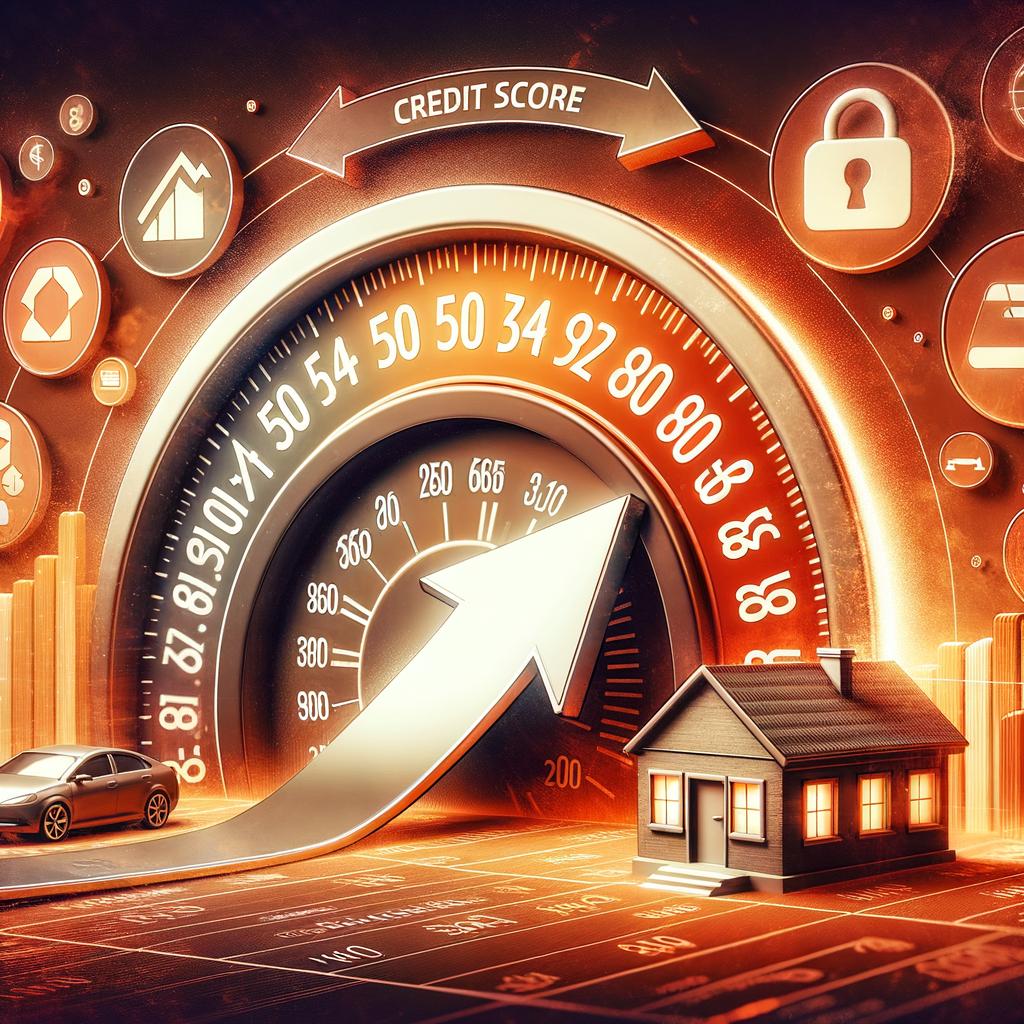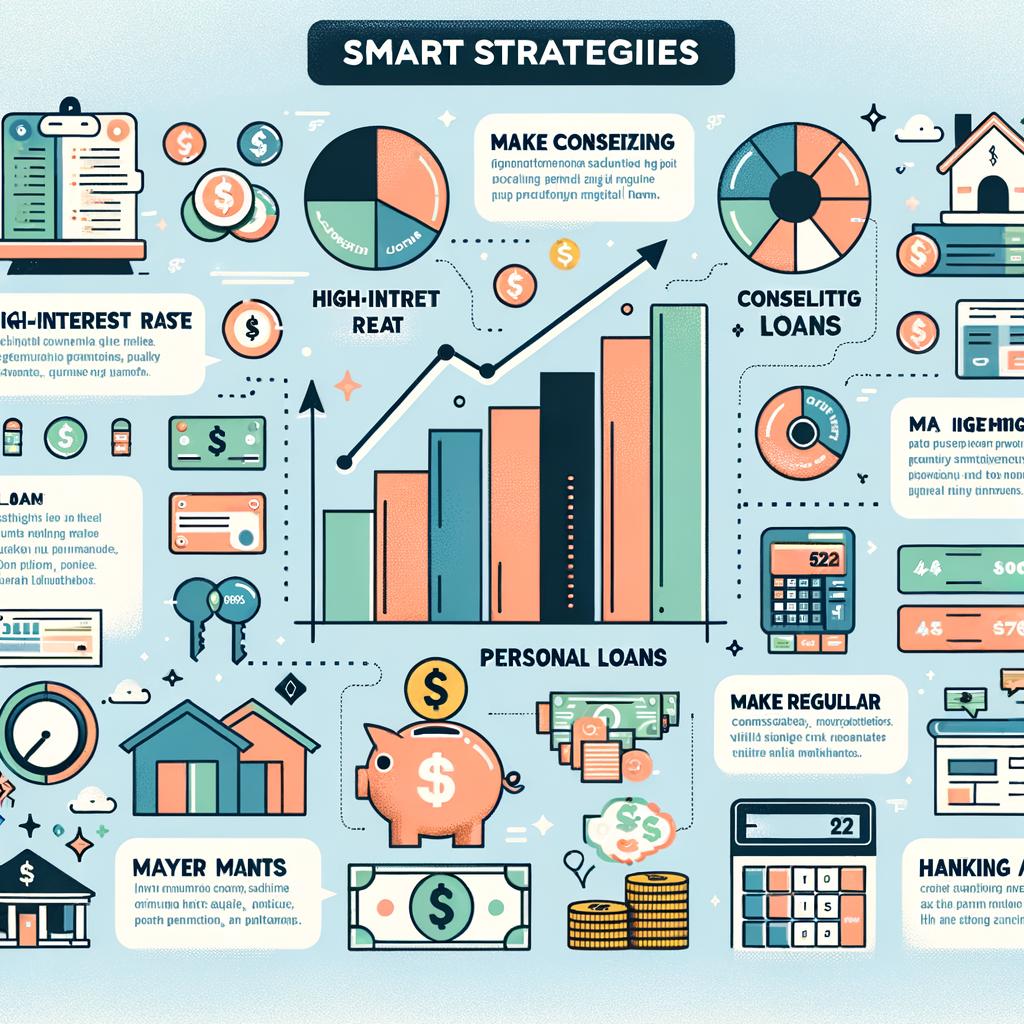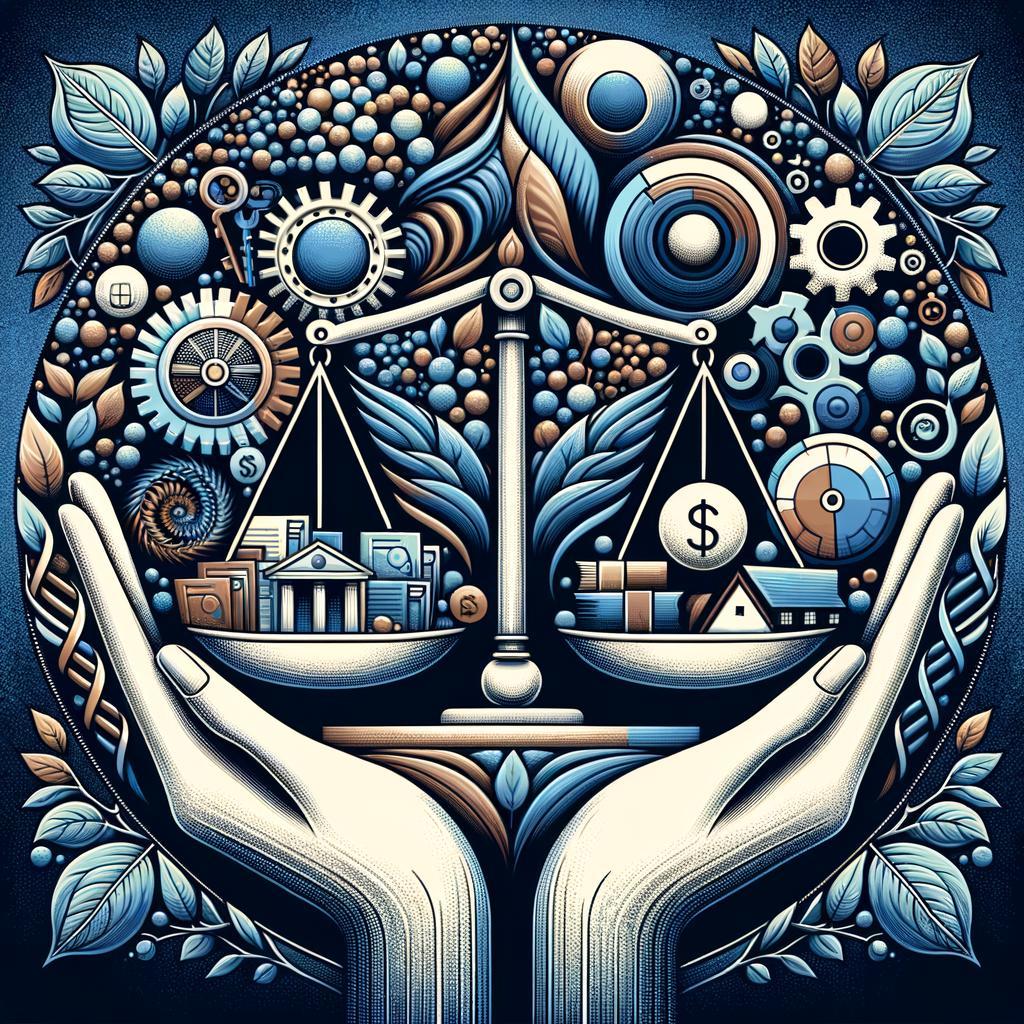In the world of finance, where choices bloom like a garden of both perks and pitfalls, personal loans stand as one of the most intriguing blossoms. Picture yourself at a crossroads, with a bouquet of dreams in one hand and a map to your financial future in the other. Should you choose the path that involves a personal loan? This financial tool, heralded for its ability to turn aspirations into realities, demands a careful examination of its landscape. Within this article, we will navigate the winding trails of opportunities and obstacles, weighing the benefits against the potential burdens. Are personal loans the key to unlocking your goals, or do they conceal hidden thorns? Join us as we embark on this balanced exploration of the pros and cons of personal loans, unraveling the intricate tapestry of this financial frontier.
Table of Contents
- Understanding Interest Rates and Terms
- Evaluating Your Financial Health Before Borrowing
- The Impact on Your Credit Score
- Smart Strategies for Managing Personal Loans
- Q&A
- Wrapping Up

Understanding Interest Rates and Terms
The intricacies behind how interest rates and lending terms function can make a significant difference in your borrowing experience. The interest rate is the cost imposed by lenders for borrowing their money, while the terms define the agreement’s structure, such as the length and conditions of the loan.
Fixed vs Variable Rates: When considering personal loans, one of the first decisions you’ll face is choosing between fixed and variable interest rates. Fixed rates remain constant over the life of the loan, offering predictability. On the other hand, variable rates can fluctuate based on market conditions, potentially lowering your overall cost if rates decrease, but carrying the risk of rising payments.
- Fixed Rates: Consistency in payments, easier budgeting.
- Variable Rates: Potential for lower initial rates, increased risk of higher payments.
Annual Percentage Rate (APR): The APR encompasses not just the interest rate but also additional fees and costs associated with securing the loan. It’s a more comprehensive indicator of your loan’s cost compared to the nominal interest rate alone.
| Term Length | Typical APR Range |
|---|---|
| 12 – 24 months | 6% – 10% |
| 25 – 48 months | 7% - 12% |
| 49 – 72 months | 8% – 15% |
Short-Term vs Long-Term Loans: The duration or term of a personal loan can influence the cost and repayment schedule significantly. Short-term loans, typically less than three years, often come with higher monthly payments but lower overall interest costs. In contrast, long-term loans extend repayment over a longer period, reducing monthly payments but increasing total interest paid.
- Short-Term Loans: Higher monthly payments, lower total interest.
- Long-Term Loans: Lower monthly payments, higher total interest.
Early Repayment: Some lenders may offer the flexibility to repay your loan ahead of schedule, reducing the interest you pay overall. However, it’s crucial to check if prepayment penalties apply, which can diminish the benefits of early repayment. Always inquire about the specific terms regarding early repayment options and any associated fees.
Credit Score Impact: Your credit score plays a pivotal role in determining the interest rate available to you. Higher credit scores typically attract lower interest rates, as lenders perceive you as a lower risk. Conversely, lower scores may result in higher rates and less favorable terms.
Understanding these components equips you to make an informed decision when choosing a personal loan. Meticulously comparing the interest rates, APRs, and terms from multiple lenders can yield the most advantageous arrangement, aligning with your financial goals and ensuring an optimal borrowing experience.

Evaluating Your Financial Health Before Borrowing
Before taking on the commitment of a personal loan, it’s crucial to take a thorough look at your financial state. This self-assessment can help you understand whether you can comfortably manage new debt and if a loan suits your current and future financial circumstances.
Start by evaluating your income sources and their stability. If your income fluctuates, securing a loan might be risky. A steady, reliable income offers a better foundation for managing monthly payments.
Next, consider your current debts and other financial obligations. Compile a list that includes credit card balances, car loans, mortgages, and any other recurring expenses. Understanding your total debt load will give you a clearer picture of your ability to handle additional debt.
Monthly budgeting plays a crucial role in this evaluation. Examine your average monthly expenses against your income to determine how much, if any, disposable income you have left. This will help you understand whether you can afford the monthly payments for a new loan without straining your finances.
- Rent/Mortgage Payments
- Utility Bills
- Groceries
- Transportation Costs
- Insurance Premiums
Review your credit score to understand how it might affect your loan options. A higher credit score often means lower interest rates and better loan terms. Conversely, a lower credit score could result in higher costs over the life of the loan.
Assessing your savings and emergency fund is another vital step. Having a financial cushion can provide security in case unexpected expenses arise, ensuring that you can meet loan obligations without resorting to high-interest credit options.
Consider the impact of the loan on your financial goals. Will taking on additional debt help you achieve your objectives faster, or will it set you back in the long run? Weighing these factors can help you make a more informed decision.
| Factor | Consideration |
|---|---|
| Income Stability | Can you count on regular, predictable income? |
| Current Debt Load | What are your existing debt obligations? |
| Monthly Expenses | Do your monthly expenses leave room for new payments? |
| Credit Score | How does your credit score affect your loan terms? |
| Savings and Emergency Fund | Do you have a cushion for financial emergencies? |
In essence, being fully aware of your financial health is crucial before applying for a personal loan. This comprehensive evaluation can help you make a decision that aligns with your financial well-being and long-term goals.

The Impact on Your Credit Score
One of the foremost factors to consider when weighing the pros and cons of personal loans is how they can affect your credit score. A personal loan can have multiple implications for your creditworthiness, both positive and negative. Understanding these impacts can help you make better financial decisions.
Positive Impacts:
- Credit Mix Improvement: Taking out a personal loan can diversify your credit mix, which accounts for 10% of your credit score. A balanced mix of credit types can positively influence your score.
- Payment History: Regular, on-time payments on a personal loan can contribute to a positive payment history, which is the most significant factor in your credit score calculation, making up 35% of it. Prompt repayments can bolster your credit score over time.
Negative Impacts:
- Hard Inquiries: Applying for a personal loan usually triggers a hard inquiry on your credit report, which can temporarily lower your credit score by a few points. These inquiries stay on your credit report for up to two years.
- Increased Debt Load: If you already have existing debts, adding a personal loan can increase your total debt load, potentially raising your credit utilization rate. High credit utilization can negatively impact your credit score.
Balance:
The key to leveraging a personal loan to improve your credit score lies in responsible borrowing practices. Being mindful of the loan’s impact on your overall debt and ensuring timely payments can help maintain or even boost your credit score.
Consider the following points for a balanced impact:
- Only borrow what you need and can reasonably pay back.
- Create a realistic repayment plan before taking the loan.
- Monitor your credit report regularly to understand the loan’s impact on your score.
| Factor | Positive Impact | Negative Impact |
|---|---|---|
| Credit Mix | Improved score due to diverse credit types. | None |
| Payment History | Boost from punctual payments. | Drop from missed or late payments. |
| Hard Inquiry | None | Temporary score dip. |
| Debt Load | Manageable debt can improve creditworthiness. | High debt raises credit utilization. |
Ultimately, the impact of a personal loan on your credit score is nuanced, dictated largely by how you manage the loan. By understanding both the potential benefits and drawbacks, you can navigate your personal loan’s influence on your credit profile more effectively.

Smart Strategies for Managing Personal Loans
Managing personal loans effectively can be a game-changer for your financial health. When handled wisely, they can bridge financial gaps and help achieve significant milestones. However, to navigate the complexities of repayments and interest rates, you need smart strategies.
Firstly, always conduct thorough research before choosing a lender. Compare interest rates, fees, and repayment terms across different institutions. This can save you a considerable amount of money in the long run. Many online tools can assist in the comparison process, ensuring you find the best deal available.
Creating a solid repayment plan is crucial. Automate your payments to avoid missing any due dates and incurring additional fees. You can set reminders on your phone or use your bank’s auto-debit feature. Consistency in repayments not only helps in reducing the principal amount faster but also boosts your credit score over time.
One effective strategy is to prioritize high-interest loans. By focusing on clearing high-interest debts first, you reduce the overall interest burden. This method, known as the avalanche method, may take longer to see progress initially but is financially prudent in the long term.
Additionally, consider consolidating multiple loans into a single loan with a lower interest rate. Loan consolidation simplifies your financial obligations, making it easier to manage and potentially lowering monthly payments. Always review the terms and avoid extending the repayment period too significantly, as it may result in paying more interest overall.
Monitoring your budget closely can also help in managing loan repayments. Track your income and expenses meticulously to identify areas where you can cut down. Redirect these savings towards extra loan payments whenever possible. An app or financial software can be incredibly beneficial for budgeting effectively.
Communication with your lender can also play a vital role. If you foresee difficulties in meeting your repayments, contact your lender as soon as possible. They may offer options such as refinancing, payment holidays, or adjusted terms that can ease financial strain temporarily.
Lastly, build an emergency fund. Having a safety net of 3-6 months’ worth of expenses can prevent you from defaulting on loans in case of unexpected financial setbacks. This fund can act as a buffer, providing you with time to reassess and adjust your financial strategies without falling behind on payments.
| Strategy | Benefit |
|---|---|
| Research & Compare | Find the best loan terms |
| Automate Payments | Ensure timely repayments |
| Prioritize High-Interest Loans | Reduce total interest paid |
| Loan Consolidation | Simplify and lower payments |
| Close Monitoring of Budget | Identify and use savings for extra payments |
| Communicate with Lender | Explore easier repayment options |
| Build Emergency Fund | Prevent default during setbacks |
Q&A
Q: What are the primary advantages of personal loans?
A: Personal loans often come with several enticing benefits. One major advantage is flexibility; personal loans can be used for various purposes like consolidating debt, covering medical expenses, financing a dream vacation, or even funding home improvements. They usually have fixed interest rates and monthly payments, which can simplify budgeting and streamline financial planning. Additionally, personal loans do not require collateral, making them an attractive option for those who may not have significant assets to pledge.
Q: Are there any downsides to consider when thinking about taking out a personal loan?
A: Indeed, personal loans come with potential drawbacks. One key con is the interest rate, which can be higher compared to other types of loans, especially if your credit score isn’t stellar. Moreover, the fixed repayment schedule might lack the flexibility some borrowers need, leaving little room for adjusting payments. Fees associated with personal loans, such as origination fees or prepayment penalties, can also add to the overall cost. Lastly, taking out a personal loan means assuming additional debt, which can impact your credit score and overall financial health if not managed properly.
Q: How might a personal loan affect someone’s credit score?
A: A personal loan can impact your credit score in multiple ways, both positively and negatively. On the positive side, successfully obtaining and repaying a personal loan can improve your credit score by demonstrating responsible borrowing behavior. Consistent, on-time payments can boost your credit history significantly. On the flip side, the initial hard inquiry made during the loan application process can cause a temporary dip in your credit score. Furthermore, if you miss payments or default on the loan, it could seriously damage your credit standing.
Q: What should someone consider before deciding to apply for a personal loan?
A: Before applying for a personal loan, several important factors should be considered. First and foremost, evaluate your financial situation to determine if you can comfortably manage the monthly repayments. Next, shop around for the best interest rates and terms, as different lenders offer varying conditions. It’s also crucial to understand the total cost of the loan, including any additional fees. Lastly, reflect on your long-term financial goals and how taking on this loan aligns with them, ensuring that it serves a purpose that contributes positively to your financial well-being.
Q: Can personal loans be used for any type of expense?
A: Generally, yes, personal loans can be used for a wide range of expenses. Unlike specialized loans—such as auto loans or mortgages, which are limited to specific uses—personal loans offer the flexibility to fund everything from emergencies to personal projects. However, it’s essential to use the loan purposefully and responsibly, keeping in mind the repayment commitments. Always check the lender’s terms, as there may be rare restrictions on certain uses for the borrowed funds.
Q: What are some alternative options to personal loans if someone is looking to borrow money?
A: There are several alternatives to personal loans depending on your needs and financial situation. Credit cards might be a good option for smaller, short-term borrowing, especially if you can take advantage of promotional 0% interest offers. Home equity lines of credit (HELOCs) or home equity loans can be viable options if you own a home and need a larger sum of money. Peer-to-peer lending platforms offer another avenue for obtaining funds. Additionally, borrowing from family or friends can sometimes provide interest-free or low-interest solutions, though it’s wise to approach such arrangements with caution to maintain personal relationships.
Q: Are there any specific scenarios where a personal loan might be the best option?
A: Yes, personal loans are particularly advantageous in certain scenarios. They can be an excellent choice for debt consolidation, especially if you’re able to secure a lower interest rate than the average rate of your existing debts. Personal loans are also beneficial for managing significant, unplanned expenses like medical bills or urgent home repairs due to their relatively quick approval process. For planned expenses, such as a wedding or a large purchase, personal loans offer a structured repayment plan that can make budgeting easier. Always ensure that the loan aligns with your financial strategy and ability to repay.
Wrapping Up
In the grand tapestry of financial decisions, personal loans weave a complex thread, rich with potential yet fraught with consideration. As we’ve journeyed through the merits and the pitfalls, it becomes clear that no one path suits every voyager. The choice to embrace a personal loan lies not in the loan itself, but in the wisdom with which it is employed. Empowered with insight, may you tread with both caution and confidence, transforming financial aspirations into realities—or steering clear of reefs that might endanger your fiscal voyage. the balance between opportunity and risk is yours to master, as you navigate the prudent path through the waters of personal finance.
